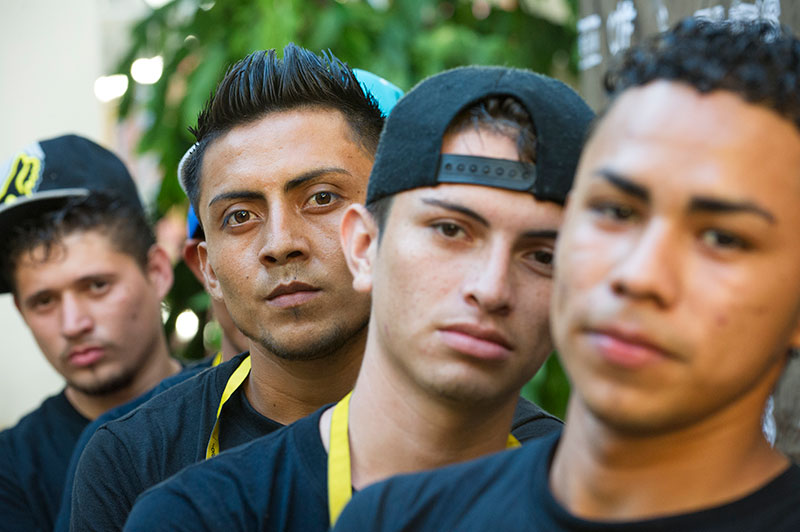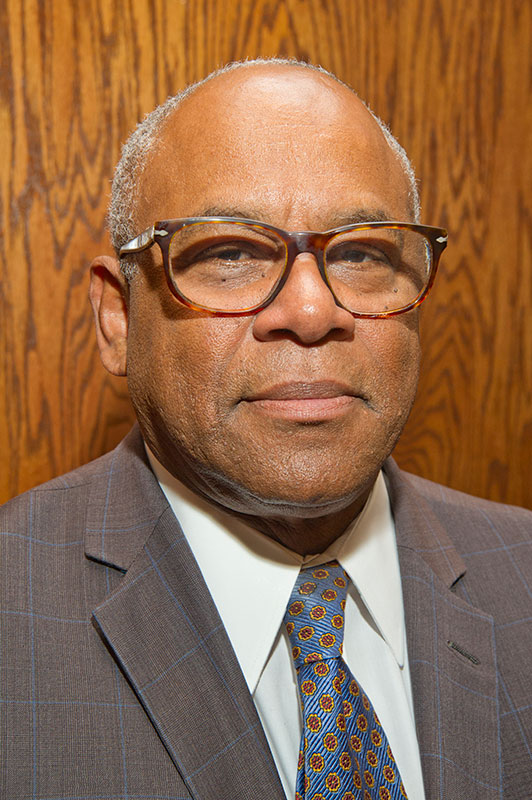
There has always been a certain fascination with the gang culture of Los Angeles among its residents, visitors and the music and film industry. However, LA’s title as the “gang capital,” with the most entrenched gang landscape of any city in the United States, is not just Hollywood hype.
There are more than 450 documented gangs and more than 45,000 gang members within the city limits. While quite large for a city of roughly 4 million people, these numbers do not account for the sympathizers and supporters of each individual gang member—the mothers, fathers, sisters, wives, husbands, lovers, children, immediate and extended family members, friends, former classmates, neighborhood associates.
The sphere of influence of gangs in LA is embedded in a large, complex and multigenerational network of people and neighborhoods.
From the source of the problem to the source of solutions

Nonetheless, LA has transformed itself from a prime example of the problem of gang violence in the 1990s to a leading source of potential solutions to gang violence today.
Against this backdrop, in a city steeped in lessons learned from this transformation, experts concerned with violence reduction from around the United States, Central America, Mexico, the Caribbean, Canada and Europe gathered at the 4th Annual LA Gang Conference—sponsored by the Los Angeles Violence Prevention Coalition and the U.S. Agency for International Development—on May 4-5.
The LA Gang Conference is about the search for potential solutions to gang violence. It is about lessons learned and applied.
During the last three years, an increasing number of USAID-funded programs in El Salvador, Guatemala, Honduras and Mexico, have adopted, adapted and exported lessons learned in LA to initiatives that serve some of the most marginalized communities in those countries.
The shared story of gang members and extremists
This year, for the first time, the LA Gang Conference also hosted practitioners, policymakers, researchers and law enforcement personnel battling extremist groups in Jordan, Pakistan, Tunisia, East Africa and Europe—to explore how lessons learned from models developed to reduce gang violence could apply to the emerging field of Countering Violence Extremism.
The current approach to countering violent extremism has primarily focused on suppression, incarceration and attacking identity—tactics perhaps reminiscent of LA’s past failed attempts to quell gang-related violence.
Through powerful testimonies of former extremists and former gang members at the LA Gang Conference, the similarities between the two groups in how and why they got involved in such groups and eventually disengaged became evident.
In this context the similarities in their testimony outweighed the differences.
The field of Countering Violent Extremism can also learn lessons from LA on how to better stem violence, whether gang-related or extremism-driven, through prevention, intervention, re-insertion and targeted suppression.
LAPD—from “biggest gang” to modeling the rule of law
The story arch of the Los Angeles Police Department is a fascinating model for other cities. The LAPD’s suppression-driven war on gangs in the 1980s and 1990s, and its many corruption scandals, have been widely documented. These tactics earned the LAPD a reputation as LA’s “biggest gang.”
Police actions that show disregard for the rule of law are of course not unique to the LAPD, whose anti-gang “CRASH” unit saw more than 70 of its officers implicated in misconduct in the “Rampart Scandal” in the 1990s.
Similarly, law enforcement in Central America and Mexico face massive challenges of corruption and a lack of credibility in marginalized communities most in need of protection. Not surprisingly, community members often remark that they would rather deal with the gangs than the cops.
What makes LAPD the example par excellence is that it transformed itself from the “biggest gang” into one of the most forward thinking law enforcement agencies in the country.
Today, the LAPD makes constitutional arrests when needed and has blended traditional law enforcement into a tapestry of social programs and community groups that create a shared sense of responsibility for public safety in the city.
In Los Angeles, it is not illegal to belong to a gang. The LAPD now makes arrests based on the law and the behavior or action that breaks the law, as opposed to what group that specific law breaker belongs to.
LA still has gang members, but it has dramatically reduced gang violence—the real metric that matters to communities. The LAPD has stopped attacking the identity of the gang and has instead focused on the behavior of its individual members.
For Central American colleagues struggling with law enforcement-related challenges, the opportunity to listen to lessons learned directly from LAPD Police Chief Charlie Beck inspires hope that similar changes can take place in their cities.
Historically, LA community activists and public health professionals vehemently rejected the role of LA’s law enforcement in reducing gang violence. Cops were viewed as the enemy, not a legitimate part of the community.
Conversely, cops viewed community activists and public health professionals as “thug huggers” who sided with gang members and refused to act responsibly by providing the police information that would help solve gang crimes.
After many years of viewing gang-related violence through a single lens, LA as a city arrived at the obvious conclusion that gang-related violence has a criminal as well as a public health component, and potential solutions had to address both.
What emerged was a shared mandate to implement a balanced, community-based, public health strategy comprised of prevention, intervention, re-entry, and relationship-based policing.
Through a series of innovative, neighborhood-based programs, LA shifted the emphasis from identity to behavior; from gang reduction to reduction of gang banging; from attacking entire neighborhoods identified as “gang neighborhoods” to arresting individuals violating the law. LA also supported other gang members who wanted to change the course of their lives ith program resources designed to help them build, rather than destroy, the fabric of their communities.
The LAPD replaced old tactics of attacking the identity of gang members, which was central to the war on gangs with data-driven social programs and targeted, relationship-based policing. This included using the best available research to identify those 10 to 15-year-olds with the highest inclination to seek out the group belonging and sense of family that gangs provide.
This strategy—which is now firmly institutionalized and deeply embedded in the DNA of the collective consciousness of LA’s municipal government and the community—is touted as the medicine that has led to a nearly 50 percent reduction in nine different categories of gang-related crime.
Applying LA’s lessons from San Pedro Sula to Amman
Los Angeles has not discovered world peace. A “mission accomplished” sign will not soon replace the famous Hollywood sign. What is indisputable, however, is that the city has found a viable and effective mechanism to problem solve around issues of gang-related violence.
Some lessons learned from the Los Angeles experience are worth exploring, adapting and applying to the context of group embedded violence.
- The singular tactic of suppression is, at best, ineffective and, at worse, strengthens the identity and cohesion of the targeted group.
- Prevention program tactics alone will not reduce violence that is already occurring.
- A balanced approach between constitutional and compassionate law enforcement and evidence-based social programs is difficult to operationalize but is most likely to be effective.
- It is impossible to reduce violence without engaging the perpetrators of violence.
- Those who have chosen to disengage from the group identity in which violence is embedded are valuable assets in helping others exit the group.
- Sensible public policies should create a pathway out for those that want out but need support to do so.
- Efforts to prevent youth from joining groups with a propensity for violence should be directed at a much earlier age.
- A four-legged, integrated strategy that includes prevention, intervention, re- entry and relationship-based policing is likely to be more effective than a single-legged tactic.
Armed with these lessons, participants in the 2015 Los Angeles Gang Conference have returned to their cities, where they each face their own challenges of reducing gang-related violence or countering violent extremism. Policymakers may draw on lessons learned from the war on poverty, the war on drugs, the war on gangs and the war on terror.
Having fought all these “wars” and won some battles, we should ask ourselves whether we are truly learning from the lessons learned when it comes to crime, violence and extremism, and what cities like LA can teach us about confronting these challenges.
Guillermo Cespedes is Senior Advisor at Creative and served as Deputy Mayor of Los Angeles and Director of LA’s Office of Gang Reduction and Youth Development from 2009 to 2014.